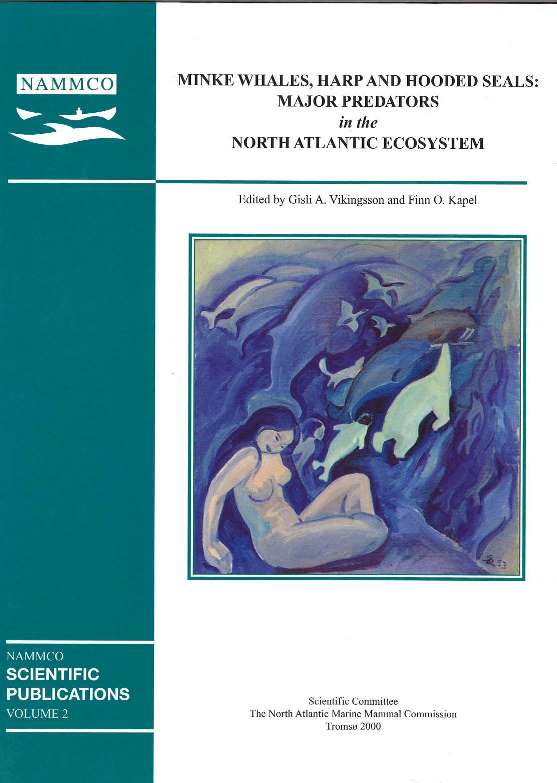Food consumption estimates of Barents Sea harp seals
DOI:
https://doi.org/10.7557/3.2968Keywords:
harp seals, Phoca groenlandica, food consumption, energy demand, prey, Barents SeaAbstract
The consumption of various prey species, required by the Barents Sea harp seal (Phoca groenlandica) stock in order to cover their energy demands, has been estimated by combining data on the energy density of prey species and on seasonal variations in the energy expenditure and body condition of the seals. Data on diet composition and body condition were collected in the period 1990-1996 by sampling harp seals during different seasons, in various areas of the Barents Sea. All diet composition data were based on reconstructed prey biomass, and adjustments were made for differences in digestibility of crustaceans and fish. The number of seals representing different age and sex groups were calculated for the entire population, and the monthly food requirements were estimated.
In 1998, the total Barents Sea harp seal stock was estimated to comprise 2.22 million seals based on a mean production of 301,000 pups. After adjustments for a pup mortality of 30% its total annual food consumption was estimated to be in the range of 3.35-5.05 million tonnes (depending on choice of input parameters). Assuming that there are seasonal changes in basal metabolic rate associated with
changes in body mass, and that the field metabolic rate of the seals corresponded to two times their predicted basal metabolic rate, the annual food consumption of the Barents Sea harp seal stock was estimated. If capelin (Mallolus villosus) was assumed to be abundant, the annual total consumption was estimated to be 3.35 million tonnes, of which 1,223,800 tonnes were crustaceans, 807,800 tonnes
were capelin, 605,300 tonnes were polar cod (Boreogadus saida), 212,400 tonnes were herring (Clupea harengus), 100,500 tonnes were cod (Gadus morhua) and 404,200 tonnes were "other fish". A very low capelin stock in the Barents Sea (as it was in the period 1993-1996) led to switches in seal diet composition, with increased consumption of polar cod (from ca. 16%-18 % to ca. 23%-25 % of
total consumption), other gadoids (dominated by cod, but also including haddock (Melanogrammus aeglefinus) and saithe (Pollachius virens)), herring, and "other fish". Using the same set of assumptions as in the previous estimate, the total consumption would have been 3.47 million tonnes, divided between various prey species as follows (in tonnes): polar cod 876,000, codfish (cod, saithe and haddock) 359,700, "other fish" 618,800, herring 392,500, and crustaceans 1,204,200. Overall, the largest quantities of food were estimated to be consumed in the period June-September.
In 1999, the total Barents Sea harp seal stock size was estimated to be 2.18 (95% CI, 1.79 to 2.58) million animals, which would give an annual food consumption in the range of 2,69 - 3.96 million tonnes (based on upper and lower 95% confidence limits and adjusted for a pup mortality rate of 0.3) if capelin is assumed to be abundant.





